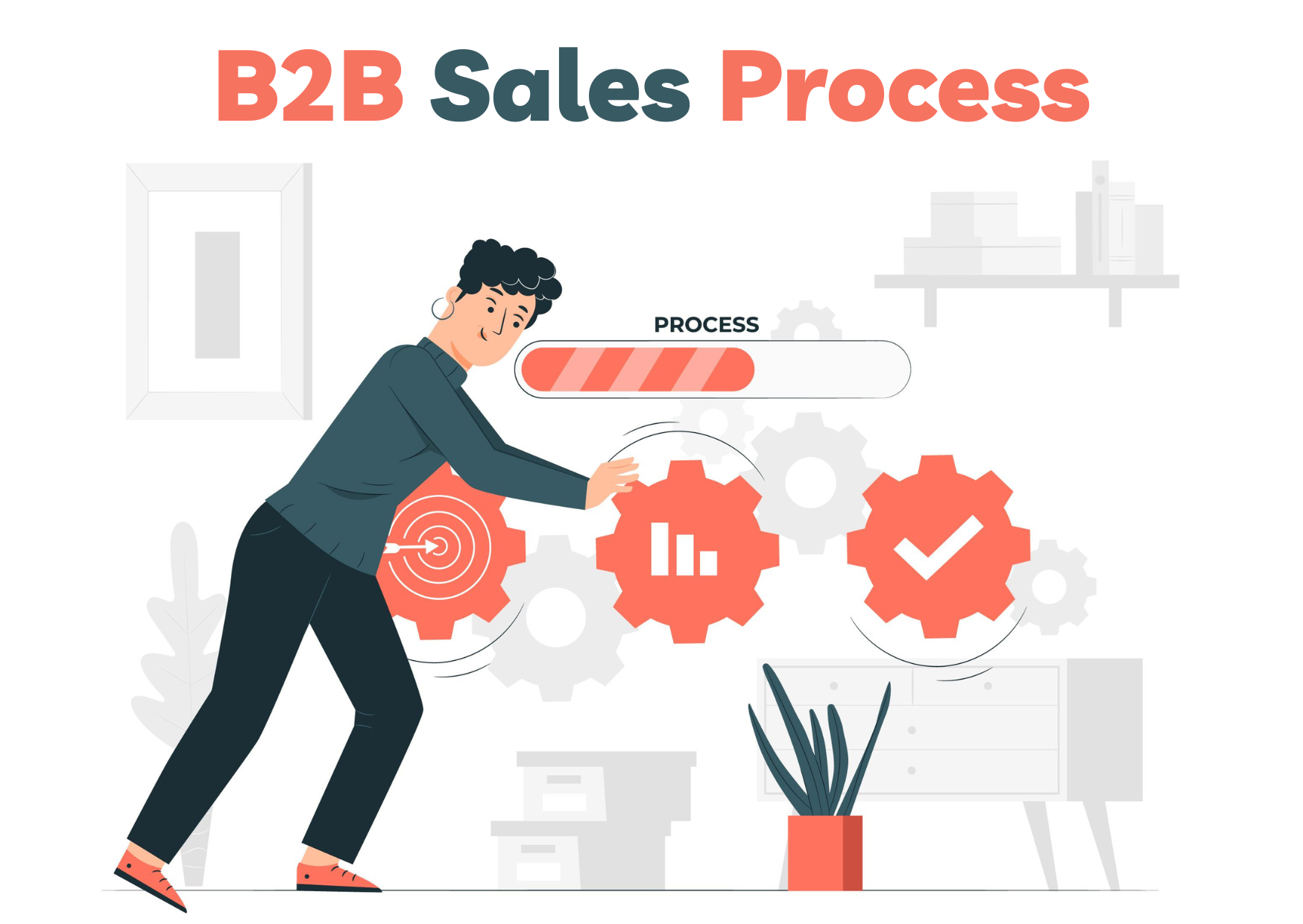A B2B sales process is a process that a salesperson takes to successfully sell a product/service to another business.
It typically begins with identifying potential customers and establishing contact with them, followed by the presentation of a product or service and its benefits. The next step is to address any objections that the potential customer may have and to negotiate a final deal.
The B2B sales process can be a complex and challenging endeavor. But with the right approach, it can lead to long-term relationships and significant revenue for a business. Here are 5 stages of a successful B2B sales process:
Identify your target market:
In order to effectively sell to another business, you need to know who your potential customers are and what they need. This requires research and analysis of the market, as well as the development of a target customer profile.
Establish contact:
Once you have identified potential customers, the next step is to establish contact with them. This can be done through a variety of channels, such as email, phone, or social media.
You can also use Mr E by EasyLeadz, the B2B contact data provider to get the direct phone numbers of top management.
It’s important to be professional and respectful in your communication and to make a good impression on the potential customer.
Present your product or service:
The next step in the B2B sales process is to present your product or service to the potential customer. This is your opportunity to demonstrate how it can solve the customer’s problems or meet their needs.
It’s important to be prepared and to have a clear and compelling presentation.
Address concerns and objections:
During the presentation, the potential customer may have concerns or objections about your product or service. It’s important to listen carefully to these concerns and to address them in a professional and helpful manner.
This may require some additional research or clarification on your part. But it’s essential for building trust and moving the sales process forward.
Negotiate the deal:
Once you have addressed any concerns or objections, it’s time to negotiate the final deal. This is where you and the potential customer come to an agreement on the terms of the sale, including the price, payment terms, and any other conditions.
It’s important to be willing to compromise in order to reach an agreement that works for both parties.
B2B Sales Process – Example
For example, let’s say that a company sells marketing software to other businesses. In this case, the B2B sales process might look something like this:
Stage 1: Identify the target market
The company conducts research to identify businesses in the marketing industry that could benefit from their software. They develop a target customer profile that includes the size of the business, the type of marketing services they offer, and their budget for marketing software.
Stage 2: Establish contact
The company reaches out to potential customers through email, phone, or social media. They introduce themselves and their product and schedule a meeting to discuss the potential customer’s needs and how their software can help.
Stage 3: Present the product
During the meeting, the salesperson presents the marketing software to the potential customer. They demonstrate how the software can help customer manage their marketing campaigns, track the results, and generate more leads. They also answer any questions that the potential customer may have.
Stage 4: Address concerns and objections
The potential customer expresses concerns about the cost of the software and its compatibility with their existing marketing systems. The salesperson listens carefully and provides additional information and resources to address these concerns.
They also offer a discount on the initial purchase and a free trial period to help the customer make a decision.
Stage 5: Negotiate the deal
The salesperson and the potential customer discuss the terms of the sale that the company can provide. They come to an agreement and the salesperson closes the deal.
In this scenario, the B2B sales process helped the company identify a potential customer, establish contact, present their product, address concerns and objections, and negotiate a successful deal. This process can be applied to any business that sells products or services to other businesses.
In conclusion, a successful B2B sales process requires a combination of market research, effective communication, and negotiation skills. By following these steps, a salesperson can build relationships with potential customers and generate significant revenue for their business.
B2b Sales
B2b Sales Process
B2b Sales Stages
Sales Cycle
